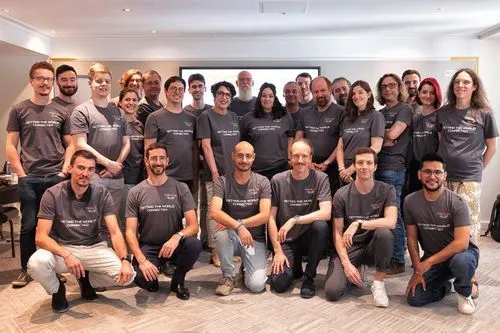"Which Secure RDP Alternative do Businesses Need in 2025? How RDS-Tools Delivers!"
Looking for a secure RDP alternative in 2025? Discover how RDS-Tools transforms remote access with browser-based login, brute-force protection and multi-user support.
Would you like to see the site in a different language?
RDS TOOLS BLOG
Since digital technology seems not to sleep nor wait on anyone, securing Remote Desktop Services (RDS) environments remains a priority for any IT professionals, Microsoft resellers, Managed Service Providers (MSPs) or software vendors. The question “what is Windows Server Update Services” is a valuable tool for managing updates and ensuring systems remain protected against vulnerabilities. However, as cyber threats grow in sophistication, combining WSUS (Windows Server Update Services) with RDS Tools Advanced Security tools has become essential for comprehensive protection.
In this article, explore with us: how Windows Server Update Services supports RDS environments, its limitations in addressing modern security challenges, and how integration with robust cybersecurity solutions, such as RDS Advanced Security, enhances protection. Finally, we’ll share best practices for IT teams to effectively implement this comprehensive server and network security approach.
)
Windows Server Update Services (WSUS) is a Microsoft-provided solution for managing updates to Windows operating systems and related software. It acts as a bridge between Microsoft’s update infrastructure and an organization’s devices, enabling centralized management of updates to enhance security and streamline maintenance.
In RDS environments, Windows Server Update Services ensures that server components and end-user devices receive timely patches to address known vulnerabilities. This reduces the risk of attacks such as ransomware, which would otherwise exploit outdated software.
WSUS benefits RDS environments by:
While Windows Server Update Services is highly effective for update management, it has notable limitations:
These limitations underscore the need for complementary security measures.
Although WSUS is indispensable for patch management, it cannot serve as a standalone solution for securing RDS environments. Understanding its limitations allows IT professionals to address security gaps proactively.
RDS environments often rely on software outside the Microsoft ecosystem, including collaboration tools, browsers and industry-specific applications. WSUS cannot manage updates for these third-party tools, leaving them vulnerable to exploitation.
Modern cyber threats evolve rapidly. Windows Server Update Services’ reactive approach to vulnerabilities—waiting for updates to be released—means it cannot mitigate zero-day threats or other emerging risks or act in a pre-emptive manner.
WSUS requires substantial manual configuration and oversight. Tasks like cleanup, database maintenance and troubleshooting synchronization issues can divert valuable IT resources from other critical areas.
By itself, WSUS lays the groundwork for update management but lacks the comprehensive features required to secure an RDS environment fully. This is where bona fide security tools come into play.
To address WSUS’s shortcomings, organizations can integrate it with adapted security solutions, creating a layered defence strategy. Tools like RDS Advanced Security complement Windows Server Update Services by filling critical gaps in protection.
Advanced security tools bring capabilities such as:
These features enhance the security of RDS environments by proactively addressing risks that WSUS cannot mitigate.
Integrating WSUS with advanced security tools creates a robust, multi-layered defense that addresses both internal vulnerabilities and external threats.
For IT teams managing RDS environments, combining Windows Server Update Services with advanced security measures requires strategic planning and execution. Following best practices ensures successful implementation and long-term effectiveness.
Keep both WSUS and your chosen security tools up-to-date. For servers and websites as well as for security matters, monitor logs for signs of issues such as failed updates or unusual activity and address them promptly.
Train IT teams and end users on the importance of updates and security measures. This includes recognizing phishing attempts and adhering to best practices for login credentials.
Automation reduces the administrative burden by streamlining repetitive tasks. Use automatic approval rules in WSUS and automated threat response in security tools to optimize efficiency.
Continuously assess the effectiveness of your integrated solution. Regular reviews and consequent re-evaluations are key in maintaining safe and secure infrastructures and networks. As your organization grows or new threats emerge, adapt your security measures accordingly.
These practices ensure the seamless operation of RDS environments while maintaining high security standards.
Windows Server Update Services (WSUS) is an indispensable component of RDS environment security, but its limitations require organizations to seek complementary solutions. By integrating WSUS with advanced security tools like RDS Advanced Security, IT professionals can build a comprehensive defense strategy that addresses both patch management and proactive threat mitigation.
A layered security approach using RDS-Tools Advanced Security not only safeguards RDS environments against evolving threats but also optimizes operational efficiency. For Microsoft resellers, MSPs and IT professionals, leveraging the combined strengths of WSUS and advanced tools is a strategic move toward robust, future-proof security.
Simple, Robust and Affordable Remote Access Solutions for IT professionals.
The Ultimate Toolbox to better Serve your Microsoft RDS Clients.
 Get in touch
Get in touch
